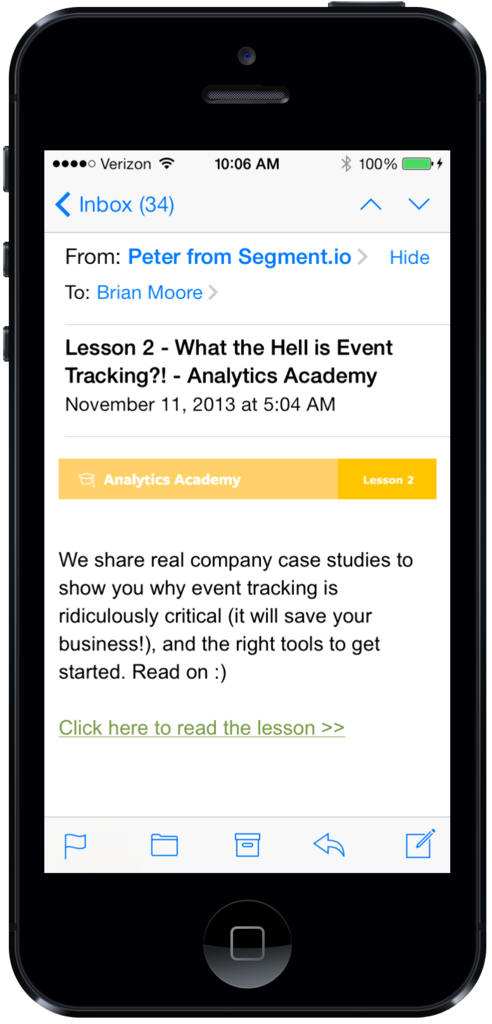Email marketing saw some big milestones this year. Yahoo announced it would begin recycling inactive email addresses older than one year. Outlook.com graduated from beta and replaced Hotmail’s web email service. Google brought tabs to millions of inboxes. Litmus hosted the first ever Email Design Conference. And just last week, we learned Google will begin hosting and serving up images for Gmail users. That’s a lot of moving pieces in the email landscape.
What can you do to future-proof your email efforts in the coming year? The elephant in the room is responsive email templates. Whether you have insights on what devices and email clients your subscribers are using, or you’re in the dark, it’s time to step up your email game and get your email templates mobile-friendly. Download pre-designed templates (like these, or these) or tinker with media queries and build one yourself (see here). Whatever you do, don’t wait another year without optimizing your email templates, promotional or transactional.
Another effort we’re executing on to boost clients’ email marketing efforts is optimizing around their email acquisition strategy. At the core of this discussion is a need to understand what content your subscribers want, and maximizing the outcomes you leverage with email. Instead of blasting promotional offers from the get go, brainstorm content marketing pieces that could be delivered via a multi-part email series.
Multi-part emails are a great way to capitalize on a new subscriber’s initial engagement while building their trust by living up to (or exceeding) their expectations. The added benefit of a welcome campaign is in validating your credibility as a sender and keeping you out of the spam folder.
One brand executing this tactic brilliantly is Segment.io with their Analytics Academy, dubbed bite-sized lessons to make you an analytics pro. Consisting of 9 weekly lessons sent via email, each week I receive just a sentence or two and a link to the in-depth post on their site. The emails are non-threatening, easily digestible and link to lessons with real business cases and actionable tips.

To summarize, offer a compelling incentive for subscribing and give new subscribers a reason to love you from day one. List growth is a delicate thing, so be sure you’re growing engaged subscribers otherwise your campaign performance may suffer. Don’t just blast the same offers available to all website visitors, make subscribers feel exclusive. As a bonus, segment welcome messages depending on how or where users signed up.
One other impact we’re making for 2014 is testing to improve campaign performance. We are testing frequency and timing of campaigns. Of course, we can’t all be Cards Against Humanity and send quarterly emails with near 60% open rates and 20% click rates to over a quarter million subscribers. But their incredible success suggests every email marketer has room to improve.
We will continue testing subject lines and content tweaks like personalization, calls to action, dynamic content, and our copy-to-image ratio. Starting simple is the best way to test the water. Be sure to isolate the variable you are testing, and keep everything else the same. That includes randomizing your test segments, if your ESP doesn’t do that for you.
Still don’t know what to test? Check the Email-Gallery and see what other people are sending across more than 45 industries. Stumped on your subject line? Check out the latest research from MailChimp on which words to avoid and which to include. The point is, you’re not alone in the quest for the email holy grail.
Some of your test results will be negligible or inconclusive but keep trying. Make sure to document results so you can refer back when creating new tests. Check out this email test tracker template I use for some of our clients. The spreadsheet will automatically calculate winners and show you the % lift or improvement.
Happy holidays & happy testing!